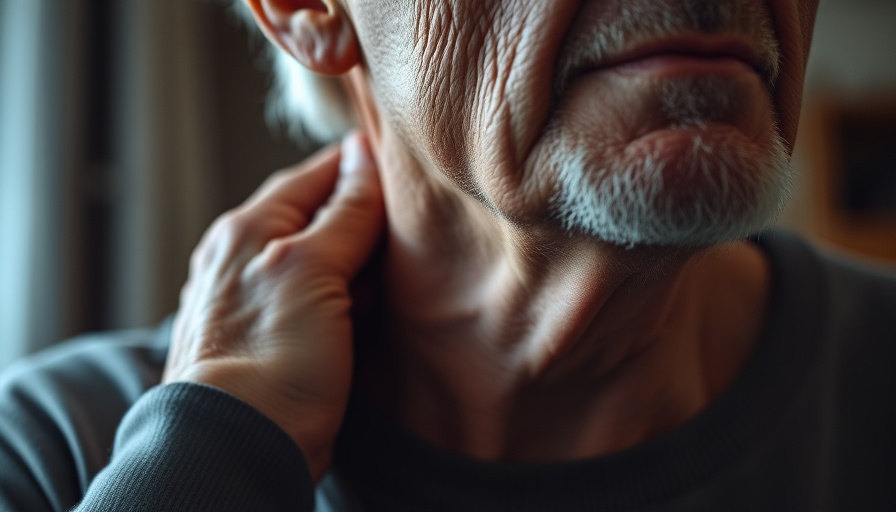
Unlocking the Secret to Natural Pain Relief
Aches and pains have become commonplace in our daily lives, particularly for those navigating the challenges of long work hours, physical exertion, and the natural aging process. While many turn to pharmaceuticals for quick relief, this approach often invites unwanted side effects and a risk of dependency. Fortunately, understanding and applying natural remedies can ease discomfort and enhance overall well-being in a sustainable way.
Movement: Your Best Defense Against Pain
Experts consistently affirm that movement and physical activity play a critical role in managing chronic pain. At facilities like Manitowoc Rehabilitation Center, movement is not only prescribed but celebrated as a fundamental component of holistic health. A sedentary lifestyle may exacerbate stiffness and muscular pain, but by integrating low-impact activities into daily routines, individuals can foster flexibility and improvement in joint health.
Gentle stretches—whether at home, the office, or out in the community—can alleviate immediate discomfort. This might include shoulder rolls, neck stretches, and lower back expansions, which are strategic movements designed to reduce tension and enhance mobility. Joining community-based exercise classes, swimming, or even practicing yoga can, over time, contribute to significant pain management improvements.
Understanding Posture: A Key to Comfort
Poor posture is another prominent contributor to daily discomfort, particularly in the neck and back. With technology constantly pulling our attention downward and encouraging slouched sitting positions, it’s vital to become mindful of how we carry ourselves. Simple adjustments—such as ensuring your computer monitor aligns with eye level, investing in ergonomic seating, and practicing good alignment while standing—can create a dramatic reduction in muscle strain.
The Healing Power of Temperature Therapy
Utilizing heat and cold therapy is an excellent home-based strategy for pain relief. Heat, through applications like heating pads or warm baths, assists in easing muscle tension and enhancing circulation. Conversely, cold therapy—using ice packs and cold compresses—can diminish swelling and numb acute pain from injuries. Understanding how to leverage these methods effectively is essential: apply heat for chronic discomfort and stiffness, while cold is perfect following a sudden injury.
Nourishing Your Body: Hydration and Nutrition Matters
Hydration is crucial in maintaining muscle function and reducing cramps, yet many overlook the importance of what they consume. An anti-inflammatory diet, rich in foods like omega-3 fatty acids found in fish, leafy greens, and berries, contributes positively to overall pain management. Conversely, avoiding processed foods and high sugar intake can help minimize discomfort.
Emotional Well-Being: Stress Management as Pain Relief
The correlation between stress and pain is well-documented; stress can escalate tension levels, leading to muscle tightness and heightened sensitivity to pain. Therefore, integrating stress management techniques—such as guided breathing exercises or mindfulness meditation—can directly contribute to pain reduction. Taking time each day to practice relaxation can refocus energy from discomfort to recovery.
Exploring Natural Remedies: Turmeric and Beyond
Beyond standard pain relief techniques, certain herbal solutions like turmeric have been recognized for their considerable anti-inflammatory properties. Containing curcumin, turmeric has been shown to ease swelling and pain, especially in conditions like arthritis. Boswellia and clove oil are additional natural alternatives worth considering, each with roles in traditional medicine that focus on pain alleviation.
Embracing Movement through Community
In Pasadena, local community centers often provide resources for group classes focusing on gentle movements, from Tai Chi to water aerobics. Engaging with others in these environments can enhance motivation and accountability while fostering camaraderie and support in your wellness journey.
Conclusion: Take Charge of Your Health
Understanding and addressing the root causes of pain through natural means empowers individuals to take charge of their health. By incorporating movement, mindful posture, nutrition, stress management, and exploring herbal remedies, the path toward a more comfortable, vibrant life becomes well within reach. This transformation promises not just pain relief but a holistic improvement in overall well-being.
Embrace these strategies today and start your journey toward a more comfortable, pain-free life!
 Add Row
Add Row  Add
Add 




Write A Comment